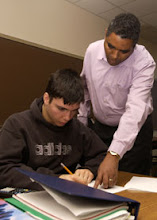Having kicked the idea of a life-time career to the curb (in previous blog), and the rise of “brokers of work,” what more should this generation of undergraduate degree holders expect?
A rapid expansion of the “contingent” workforce! Say “good bye” to permanent employment!
According to Dana Shaw, a Senior Vice President for Staffing Industry Analysts, “Currently, the average mix of contingents in the Fortune 100 is 20-30 percent of the workforce, but it will evolve to 40 to 45 percent of the workforce by 2020 and becoming a majority by 2030.” (Source: The Contingent Workforce and Public Decision Making, Thomas Fisher, 2012)
By definition, a contingent workforce is comprised of non-permanent workers—freelancers, independent professions, consultants, contract workers or accidental entrepreneurs—who work for an organization. The Bureau of Labor Statistics reports that nearly four out of five employers use some form of nontraditional staffing. Obviously, the megaforce, TIG, has facilitated the trend toward greater flexible in labor usage by businesses, but so has the growth in knowledge. Companies needing cutting-edge knowledge can purchase discrete units from the most highly-skilled among the contingent workforce. Having fewer workers on the payroll and no benefit obligation to the contingent worker should make companies lean—more competitive in the global marketplace.
Growing alongside the contingent workforce is a complementary global trend, co-working. Co-working is a network of loosely joined workspaces that fills the space between working in isolation at home and trudging to the local wified coffee shop. In essence, co-working implies working alongside, often in collaborating with people you normally would not in “co-working spaces”—think business centers with feng shui!
Co-working began as a social movement to build community, reduce the environmental impact of daily commuting, and lessen worker isolation, according to Steve King, a partner in Emergent Research. By King’s calculations there are some 760 co-working facilities (2011) up from 405 in 2010. deskmag reports 1129 coworking spaces worldwide (531 in the US, 467 in Europe) in its 2nd Global Coworking Survey (2011/12).
“Their rise [co-working spaces] is fuelled by several things, including technologies such as cloud computing; more women and freelancers in the workforce, which means greater demand for flexible work arrangements; and economic pressure on firms’ property costs. Nor is the trend confined to office workers. An organisation called BioCurious recently opened a community biology lab in California’s Bay Area. Budding chefs share kitchens; communal workshops known as “maker spaces” are springing up too.” (Source: http://www.economist.com/node/21542190)
According to deskmag’s Second Global Coworking Survey, “[t]he average coworker is still 34 years old, and two thirds of them are men – a finding that matches with the First Global Coworking Survey. However, one year later, we find that spaces are attracting more younger and older people. Every twelfth coworker today is over fifty.”
Not surprisingly, the average coworker is compensated well. “Three out of four coworking space members have a university degree as their minimum qualification. This level of education is extremely high compared to the average population in the surveyed countries. Perhaps this explains their high income. A third of all coworkers report earning above-average wages, when compared to their country’s average income level. 38% of respondents suggested that working in a coworking space directly improved their income – only 2.5% believed their income had decreased since joining.” (Source: http://www.deskmag.com/en/the-members-of-coworking-spaces-survey-203)
More good news for the work refugee of tomorrow. The coworking community has begun to coalesce into an organized professional body. The community gathered at Austin’s premiere SXSW event last month to talk shop. Raising public awareness, building regional coworking alliances and expanding all kinds of collaborative behaviors (car sharing and cohousing) were hot topics on the second Global Coworking Unconference Conference (GCUC, pronounced “juicy”) agenda.
The future of work is shaping up to be vastly different than the stability of your grandfather’s…twenty-five years standing in the same space, trading loyalty for a yearly pay bump and ending with a company engraved pocket-watch.
The future of work promises a cornucopia of opportunities for well-disciplined self-starters able to manage ownership of both their time and talent. This is what this generation of undergraduate degree holders should be expecting.
I wonder…have we dutifully prepared them for their world or just ours?
 Kay Strong, Ph.D., Southern Illinois University, M.T., University of Houston, M.A., Ohio University; Associate Professor at Baldwin-Wallace College; Areas of expertise: international economics, contemporary social-economic issues, complexity and futures-based perspectives in economics. E-mail: kstrong@bw.edu
Kay Strong, Ph.D., Southern Illinois University, M.T., University of Houston, M.A., Ohio University; Associate Professor at Baldwin-Wallace College; Areas of expertise: international economics, contemporary social-economic issues, complexity and futures-based perspectives in economics. E-mail: kstrong@bw.edu

No comments:
Post a Comment